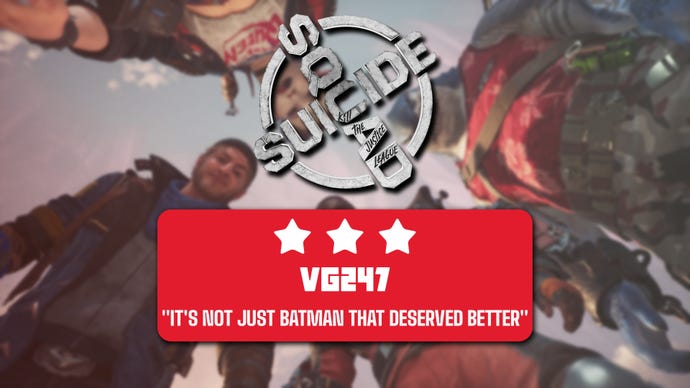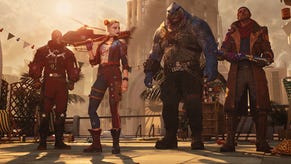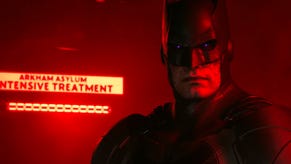Suicide Squad: Kill the Justice League review – This mission goes off the rails, but isn't a bust
Rocksteady's take on the Suicide Squad feels limited by its GaaS aspirations, but it's got a lot of soul – and some nifty tricks up its sleeve.
UPDATE: FINAL REVIEW
Several hours of chaotic playtime later, Suicide Squad: Kill the Justice League still largely elicits the same feelings from this looter-shooter veteran and casual DC fan. Its highs are really high and separate Rocksteady's effort from the chaff, but in the long run, we're stuck with a game of two halves.
Perhaps the most disappointing bit is how the story doesn't actually end unless you're willing to put up with the live service bloat and upcoming seasonal content. This is a common occurrence among huge GaaS titles (once again, Anthem and Avengers come to mind), but I also believe many of its predecessors in the same space actually wrapped up a full story arc before teasing what was coming next. Since most of the writing (and how everything is presented) in Suicide Squad: KTJL is generally enjoyable and charming, the fact the credits just start rolling when the overarching design randomly decides it's time to jump into the pool of interchangeable activities is especially off-putting.
To the game's credit (and everyone involved), I must say the moment-to-moment combat and late-game loop of stylish abilities and more hard-hitting guns actually carries the entire thing if you're into what's on offer. All in all, this is a far more polished release than any of the aforementioned titles. Misguided and at odds with what the studio is known for, yes, but it's hard to deny the formula works, kind of. It's just a simple matter of deciding whether you want to engage with it or not.
I guess the big question as Suicide Squad: KTJL transitions into a live service model that seems at least set to run for a year or so is whether key issues such as the bland loot or the bulk of the mission design will receive reworks eventually, because it's hard to imagine a future for the game if those elements aren't improved upon. Avengers found a decent amount of success (more than anyone expected) ironing out its systems and model for those who wanted to smack robots and other goons around while raising stats, though that didn't save its reputation. At this point, I guess WB Games and Rocksteady should work towards that, because the game is what it is.
Long story short: If 'Crackdown but DC-themed looter' sounds attractive to you, you'll probably have a lot of uncomplicated fun with Suicide Squad: Kill the Justice League well past the credits. Otherwise, you're looking at part of a pretty good Rocksteady game — which looks nifty — surrounded by muddled systems and tired design (whether you're playing alone or with friends) that should be locked away in the Phantom Zone at this point. It's not just Batman that deserved a better ending.
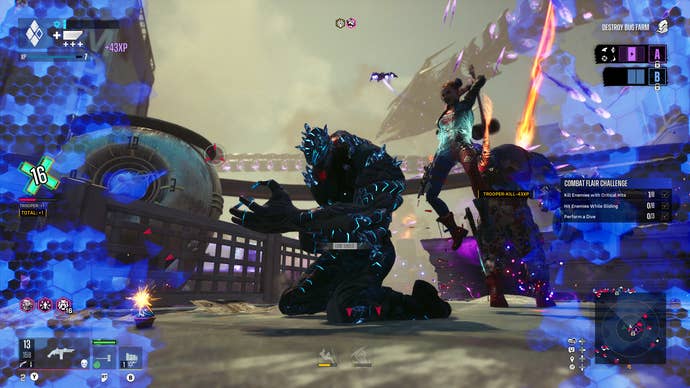
ORIGINAL ARTICLE
Disastrous live service launches have sadly become a too common occurrence in recent times, and I’ve personally experienced lots of them. Going into Suicide Squad: Kill the Justice League, everyone was bracing for the worst, but coming from catastrophes such as Anthem or Marvel’s Avengers, this one hasn’t bored me to tears… for now.
After 10 hours or so of campaign progression and open-world mayhem, Rocksteady’s long-in-the-works, unexpected follow-up to 2015’s Batman: Arkham Knight doesn’t justify such an excruciatingly long development (though I suspect it’s been rebooted to hell and back). However, it’s hard to deny the studio excels in certain areas, infusing the whole package with a degree of charm and polish that you don’t see very often.
The (still on-going) review period has been nothing but a bumpy ride given the non-existent early start press have been given, plus a couple of sudden server outages that should anger those who paid for the noticeably more expensive deluxe edition of the game. And yet, I’ve found myself enjoying the experience well enough and being surprised by the overall presentation and tight feeling of the moment-to-moment gameplay.
Suicide Squad: Kill the Justice League’s premise is simple: Task Force X is assembled by Amanda Waller (played by the always reliable Debra Wilson) to deal with Brainiac, his invading forces, and worst of all, the largely mind-controlled Justice League. That’s far from ideal for everyone involved. The idea of a ragtag group of DC evildoers whose power levels aren’t that high taking on Superman and other powerful beings didn’t work very well in the 2016 movie (James Gunn’s 2021 flick was smart enough to avoid that), but the writing in Kill the Justice League – plus all the video game-y elements involved – actually sold me on the idea.
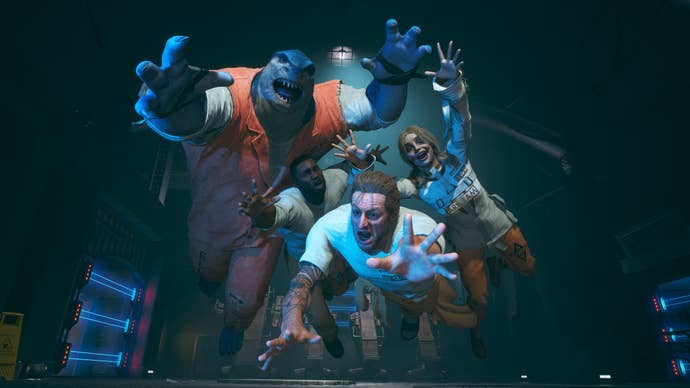
Mind you, the narrative still has to find ways to make Earth’s greatest superheroes a bit weaker in order to give Task Force X a fighting chance, but interpersonal conflicts that don’t involve the main characters and gradual in-universe powerups make it work in the long run. More importantly, it’s a less serious, more colorful take on Rocksteady’s grim ‘Arkhamverse’ that allows the studio to flex different muscles. Some late story choices will cause division among the most rigid fans, but I found it refreshing that creatives here were willing to take such massive swings with certain characters and key scenes.
The overall quality of the audiovisual presentation and the spark of the writing often reminded me of Eidos Montréal’s Guardians of the Galaxy in more than one way. This only amplified the feeling of how great Suicide Squad: Kill the Justice could’ve been had Warner Bros. Games allowed Rocksteady to 100% do its thing. The open-world structure doesn’t kill it (Arkham City/Knight handled it well). Neither does the ballsy storytelling on display. It’s the trite live service elements and loot systems – which I personally don’t hate when they’re done well – that mix with the rest of the package about as well as water with oil.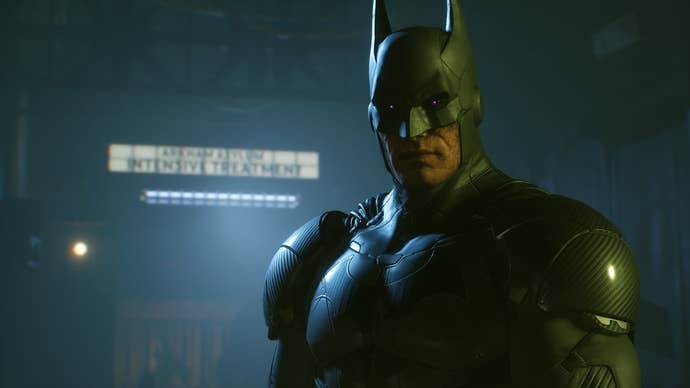
As some who’s spent an embarrassing amount of time playing Marvel’s Avengers after its more than decent content updates and free expansions arrived, Suicide Squad: Kill the Justice League already feels like a tighter, more focused looter-shooter-brawler game. But it’s still not enough, mainly because it shouldn’t be that type of game to begin with. It’s hard to nail that genre – and much harder to mix with the traditional action-adventure gameplay – and Rocksteady is out of its comfort zone here.
Traversing a besieged version of Metropolis full of neat little details for DC fans as each of the four characters available so far (the Joker and more are coming later this year) is fun, especially if you’re Captain Boomerang, who’s able to teleport around and juggle enemies with ranged melee attacks. The characters’ strengths and weaknesses are well exploited, and King Shark must be one of the best-feeling tanky characters I’ve played as in recent memory. But the loot – which is acquired too sparsely and feels a bit rigid despite a few cool modifiers – ultimately comes across as more of an extra step to juice up the characters, instead of something exciting to work towards to. We’ve sadly been here before.
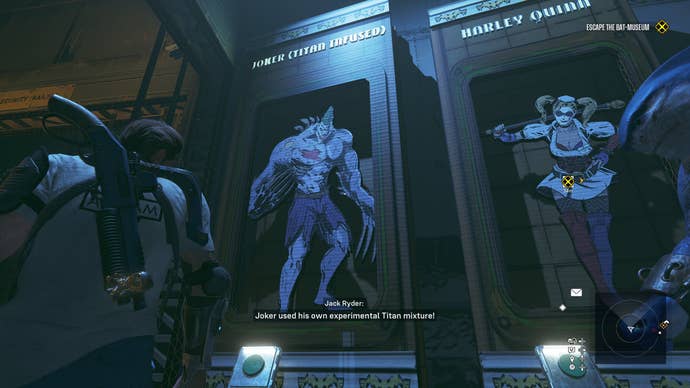
There’s always, of course, the likely chance of the developer making loot and skill progression (way more interesting albeit tied to the former) more compelling in post-launch updates, but who will be sticking around for those, especially when most of the marketing campaign and PR response has been so misguided and lacking? Franchises as well-established as Diablo can afford this luxury, but I’m not sure anymore about comic book games that needlessly overcomplicate things just because the publisher wanted a piece of a cake that started to rot away like five years ago.
Perhaps even more egregious is how the live service, RPG-ish aspirations affect the mission structure that guides most of the story campaign and the entirety of the end game (which I’ve yet to experience) past the deceitfully more linear and satisfying initial hours. Like I said, it’s more flexible than anything in Marvel’s Avengers (plus enemies are far less sponge-y), but cookie-cutter open-world events often become the entirety of a “main” mission which is only differentiated from side content because a stunning cutscene happened. This doesn’t apply to every major beat of the main dish, but it’s disappointingly common and blurs the line that’s supposed to separate the high-quality stuff from the optional grind.
As I approach the end game portion of the game, where we’re supposed to spend many more hours, and tinker with the online experience, which takes away the cool option to switch from one character to another on the go, I fear that the bland and uninspired will eventually overtake the awesome part of Suicide Squad: Kill the Justice League. It’s an extremely funny, well-made, and once-traditional co-op game stuck in a live service cage that makes it sadder and more tiring as time goes on. Will the most demanding content in the game convince players to stick around and actually engage with the ‘numbers go up’ systems? I don’t think so, but I’m not writing it off just yet.
Suicide Squad: Kill the Justice League is out now on PC, Xbox Series X/S and PS5. This review was written with code provided by the publisher for the PC version of the game.
